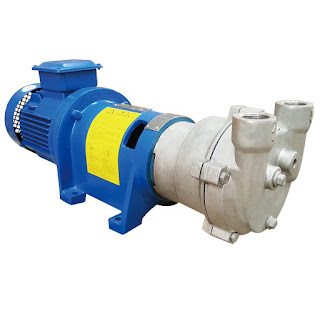Principle of Industrial Furnace Equipment
Industrial furnace is a kind of thermal equipment which uses the heat of fuel combustion or energy conversion to heat materials or workpieces in industrial production. Generally speaking, boilers are also industrial furnaces, but it is customarily not included in the scope of industrial furnaces.
The structure of industrial furnace, heating process, temperature control and atmospheric environment directly affect the quality of finished products. In forging furnace, increasing the heating temperature of metals can reduce the resistance of deformation, but too high temperature will lead to grain growth, oxidation or overheating, which seriously affects the quality of the workpiece. During the heat treatment process, if the steel is heated to a temperature higher than the critical temperature and then suddenly cooled, the hardness and strength of the steel can be improved. If heated below the critical temperature, slow cooling can reduce the hardness and improve the toughness of the steel.
Industrial furnaces can be used in many kinds of oxidizing furnaces in order to obtain dimensional accuracy and smooth surface, or to reduce metal oxides to protect dies and reduce processing allowances. In the open fire of an unoxidized reheating furnace, the reducing gas is produced by incomplete combustion of fuel, in which the oxidation loss rate can be reduced to less than 0.3% by heating the workpiece. Artificial preparation is used to control the atmosphere of atmosphere furnace. Gas carburization, carbonization, bright quenching, normalizing and annealing can be carried out by air charging. The change of microstructures is realized and the mechanical properties of the purpose are improved.
In the fluidized bed furnace, the workpiece buried in the particle layer can be improved by using fuel combustion gas, other fluidizers or external devices, through graphite particles or other inert particles. It can also be used for carburizing, nitriding and other non-oxidizing heating. In salt bath furnace, molten salt solution is used as heating medium to prevent oxidation and decarbonization of workpiece.
Cast iron smelting in industrial furnaces is often affected by coke, gas supply quality, furnace condition and temperature. It is difficult to stabilize the smelting process and to obtain high quality hot metal. Hot blast stove can effectively increase the temperature of molten iron, reduce the loss of alloys, and reduce the oxidation rate of iron, thus producing high cast iron. With the appearance of coreless induction furnace, there is a tendency to replace cupola.
Smelting in industrial furnaces is not restricted by any grade of cast iron. It can be converted from grade cast iron to another grade cast iron, which is conducive to improving the quality of molten iron. Some special alloy steels, such as ultra-low carbon stainless steel rolls and steam turbine rotor steels, need open-hearth or ordinary electric arc furnace to smelt steel, refining furnace through vacuum degassing and argon mixing miscellaneous, further refining high purity, large capacity, high quality steel.
VACUUM GRAPHITIZATION FURNACE FOR CATHODE MATERIAL
VACUUM LABORATORY CARBON FIBER GRAPHITIZATION FURNACE




评论
发表评论